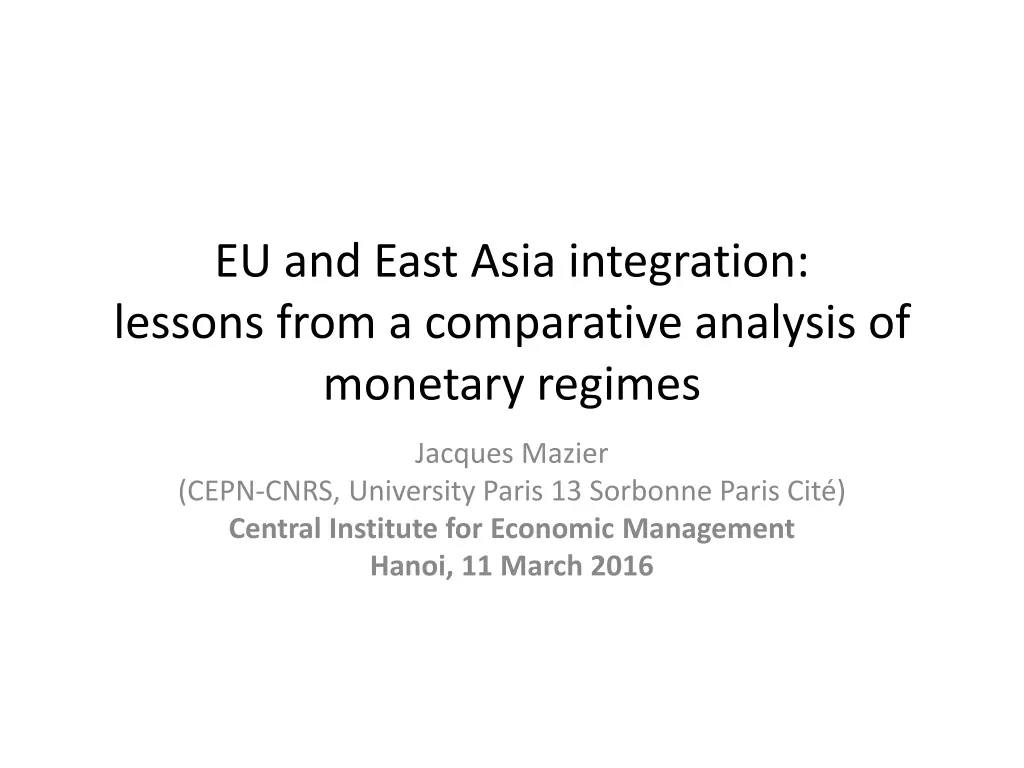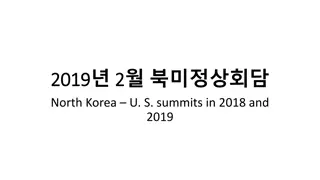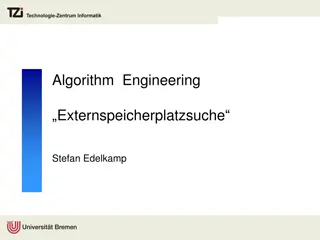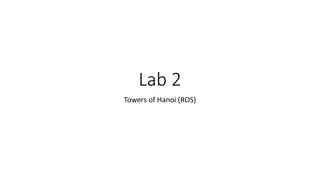
Historical and Comparative Analysis of EU and East Asia Monetary Regimes
Explore the contrasting historical paths of monetary integration in the EU and East Asia, examining the lessons learned from regional integration and monetary regimes. Delve into the complexities of monetary unions, economic performances, and intra-regional monetary misalignments. Gain insights from the experiences of diverse countries within these regions and the challenges they have faced in their monetary policies.
Download Presentation

Please find below an Image/Link to download the presentation.
The content on the website is provided AS IS for your information and personal use only. It may not be sold, licensed, or shared on other websites without obtaining consent from the author. If you encounter any issues during the download, it is possible that the publisher has removed the file from their server.
You are allowed to download the files provided on this website for personal or commercial use, subject to the condition that they are used lawfully. All files are the property of their respective owners.
The content on the website is provided AS IS for your information and personal use only. It may not be sold, licensed, or shared on other websites without obtaining consent from the author.
E N D
Presentation Transcript
EU and East Asia integration: lessons from a comparative analysis of monetary regimes Jacques Mazier (CEPN-CNRS, University Paris 13 Sorbonne Paris Cit ) Central Institute for Economic Management Hanoi, 11 March 2016
1. Introduction on regional integration and monetary regimes 2. Four country SFC modeling: EU and East Asia 3. EU monetary regimes: lessons from simulations 4. EA monetary regimes: lessons from simulations 5. Conclusion
1. Introduction Regional integration and monetary regime: two contrasted histories in EU and EA EU towards monetary union with political will: monetary snake, EMS in 1979, new EMS in 1987, the Single Act and the Single Market 1986, Maastricht treaty in 1992, speculative attacks in 1992-1993 but euro created in 1999, without any other institutional changes EA integration by the market, at the level of ASEAN+3, around China, with pragmatic exchange rate regimes (peg on the dollar, crisis of 1997-1998, more flexible regimes and effort to improve monetary and financial cooperation during the 2000s), but with limited results due to political issues; some revival after 2008 (Asian Monetary Fund, ACU)
Introduction (2) Strong heterogeneity between countries in both cases (North / South EU; China/Japan/Korea/ASEAN and intra-ASEAN) Unequal performances in terms of growth: EU, slow growth since the 1990s (overestimated effects of the Single Act; Maastricht consequences, Stability pact, intra-EU competition through taxes and wage cuts) with recurrent crisis (1992-1993, 2007-2008, 2010); High growth in EA, in spite of the Asian crisis 1997- 1998 and finacial crisis 2008 or Japan slow growth since 1990s; partly driven by China, with government impulsion and monetary adjustments when necessary
Introduction (3) Unequal intra-regional monetary misalignments between EU and EA (using a FEER approach) EU: large intra-EU ER misalignments from the end of the 1980s to 1992; from 2005 to 2012 between South and North More limited ER misalignments in EA (overvaluation in the middle of 1990s for Thailand, Korea, VN; undervaluation of the yuan from 1994 to 2010; overvaluation of Indonesian rupee since 2010)
Introduction (4) Lessons from previous macro modeling (with Saglio, 2008 for EU and Saglio and Oh, 2008 for EA) EU interdependency with 14 countries, costs and limited efficiency of real adjustments through wage and employment cuts EA with China/Japan/EA/US and RoW, interest of keeping ER adjustments But no analysis of the monetary regime itself; on the contrary SFC approach (Godley-Lavoie), a useful tool to analyze more precisely alternative monetary regimes, with description of monetary and financial institutions Analysis of the European monetary union using a SFC model (with Duwicquet 2010, 2013)
2. A four country SFC model (EU/ EA) EU model (North/South/US/RoW) with alternative regimes for the past, the present and the future: Current system (euro) EMS hybrid regime with fixed but adjustable ER against ECU and floating against $ Multi-euros with national euros and a global euro National euros floating South euro pegged to North euro floating National euros and eurobancor
2. A four country SFC model (2) A euro-bancor model (inspired by Keynes) Euro-bancor, basket currency of European currencies which are pegged to it and floating against the $, with criterion of ER adjstments based on intra-EU imbalances (unlike the EMS) No need to accumulate foreign reserves; ECB as a clearing union where each country has an account (equivalent to TARGET2 and using the SEPA) With specific proposals of Keynes to reduce imbalances (interests paid by countries both in deficit and in surplus; funds collected by ECB redistributed to countries according to their external position; incitation for surplus countries to import more; last utilization of the funds redistributed to deficit countries to import more capital goods and improve at medium term their non-price competitiveness)
A four country SFC model (3) East Asia 1st generation model (China/EA/US/RoW) with corner or intermediate regimes: 1990s (XX) with yuan and EA pegged to the $; end of 1990s and beginning of the 2000s (XL or XA) with yuan pegged to the $ and EA/$ floating or managed; end of the 2000s and 2010s (AL) with yuan/$ managed and EA/$ floating For the future: yuan and EA floating/$ (LL); yuan zone, not likely (LX or AX) with yuan/$ floating or managed and EA/yuan fixed; yuan block (LA) with yuan/$ floating and EA/yuan managed
A four country SFC model (4) East Asia 2nd generation model: ACU regimes with China/Japan/EA/RoW Current situation with yuan/$ fixed or managed, yen and EA floating /$ (regimes XL or AL) ACU regimes, yuan/$ floating with yen and EA fixed but adjsutable with ACU (currency basket of yen, yuan, EA); ACU without yen; ACU without yuan ACU bancor regimes with ACU bancor as currency basket, Clearing Union , yen and EA floating/$ but pegged to the ACU bancor with fixed but adjustable ER without need of foreign reserves; possibility of government spending for surplus countries Global ACU as a new international currency floating/$, yuan, yen and EA fixed but adjsutable /ACU global with Clearing Union ACU single currency
A four country SFC model (5) Illustrated in the case of EA with the balance sheet Households consume, hold cash and bank deposits; firms finance their investments with profit and loans; government issues bonds to finance its deficit; these public bonds are the main international assets; Banks supply credit to firms without restriction, hold domestic or foreign bonds; CB can refinance banks, holds domestic and foreign reserves (US bonds) International trade analyzed through bilateral imports with demand and price effects Prices and interest rates are constant Exchange rates determined by supply/demand of bonds on the relevent market (equivalent to confrontation of flows in and out); or fixed with criteria of adjustment based on current account (or foreign reserves in some variants)
East Asia balance sheet Households Firms Govt CB Banks Capital K Cash H - H Reserves - RS RS Advances A - A Deposits M -M Bills BcbUSEA BbUSEA BbRWEA BbCHEA -BEA BcbEAEA BbEAEA Loans -L L Balance -Vh -Vf -Vg
3. EU monetary regimes: lessons from simulations Current system (euro) characterized by overvaluation of South euro and undervaluation of North euro represented by a loss of competitiveness of South country (in the import equations): negative impact on SP trade balance and on SP GDP without impact on the euro; no mechanism to compensate the negative effect on growth and employment EMS regime with fixed but adjustable ER between SP/GE: when current account accumulate deficits facing the same shock: after some periods devaluation of the SP currency inducing a recovery and an improvement of SP trade balance at the expend of GE which is obliged to devaluate later on; better for SP growth but more instable.
Spain trade balance 0.5 0.4 0.3 0.2 0.1 0 48 51 54 57 60 63 66 69 72 75 -0.1 -0.2 -0.3 Current System EMS S Euro pegged to N Euro Both Euros floating Multiple Euros
Spain currency /dollar 1.09 1.07 1.05 1.03 1.01 0.99 0.97 48 51 54 57 60 63 66 69 72 75 Current System EMS S Euro pegged to N Euro Both Euros floating Multiple Euros
German currency /dollar 1.01 1 0.99 0.98 0.97 0.96 0.95 48 51 54 57 60 63 66 69 72 75 Current System EMS S Euro pegged to N Euro Both Euros floating Multiple Euros
Spain GDP (in national currency) 1.05 1.04 1.03 1.02 1.01 1 0.99 0.98 0.97 48 51 54 57 60 63 66 69 72 75 Current System EMS S Euro pegged to N Euro Both Euros floating Multiple Euros
German GDP (in national currency) 1.03 1.02 1.01 1 0.99 0.98 0.97 48 51 54 57 60 63 66 69 72 75 Current System EMS S Euro pegged to N Euro Both Euros floating Multiple Euros
3. EU monetary regimes: lessons from simulations (2) A multiple euros scenario based on the restauration of national euros coexisting with the global euro: the overvaluation of Spanish euro has a negative impact on Spain s trade and GDP leading after some periods to a devaluation of the SP euro against the euro (and $); SP trade and growth recovers, inducing an appreciation of the global euro (and of the GE euro pegged to it); German competitveness is eroded, inducing a devaluation of the GE euro; succession of ER adjustments; on the whole, favorable to SP growth, but more instable; possibility of stabilizing the dynamics if the adjustment criteria are less strict (small deficits allowed or criterion on reserves)
3. EU monetary regimes: lessons from simulations (3) A euro zone without Germany: GE currency/$ floats and South euro (SP) pegged to GE with possibility of adjustments; close to the EMS case at the beginning, but after two SP euro devaluations the dynamics is more stable than in the multiple euros regime; SP GDP is well restored without too much detriorating GE growth A euro zone without Germany and a South euro/$ floating: the advantages (and the risks) of free floating
3. EU monetary regimes: lessons from simulations (4) A euro-bancor model: rather utopic in its ultime configurations but keeping some exististing institutions and able to reduce imbalances and preserving growth. In conclusion, alternative proposals to current EMU exist and appear more favorable (in the absence of any progress towards more fiscal federalism) but the main issue is the question of transition period with risks of financial crisis
4. EA monetary regimes: lessons from simulations Regime XX (yuan and East Asian/$ fixed) middle 1990s: a gain of Chinese competitveness/East Asia induces a gain in China trade and GDP and a symetric loss in EA without adjustement mechanism. Regime XL or XA (yuan/$ fixed, EA/$ floating or managed) end of 1990s, beginning 2000s: the initial gains of China and losses of East Asia are reduced thanks to the EA depreciation Regime AL or LL (yuan/$ managed or floating, EA/$ floating) end of 2000s and 2010s: adjustment mechanisms are stronger thanks to the EA depreciation and yuan revaluation
Competitivity gains China/EA GDP of China (relative difference to the base line) 0.05 0.04 XL 0.03 XX Dollar Pegged LL Floating LX Yuan Area 0.02 XA AL AX Yuan Area 0.01 LA Yuan Bloc 0 49 50 51 52 53 54 55 56 57 58 59 60 -0.01
Competitivity gains China/EA GDP of EA (relative difference to the base line) 0.02 0 49 50 51 52 53 54 55 56 57 58 59 60 XL -0.02 XX Dollar Pegged LL Floating LX Yuan Area -0.04 XA AL AX Yuan Area -0.06 LA Yuan Bloc -0.08 -0.1
Competitivity gains China/EA yuan (1$=E2yuan relative difference to the base line) 1.05 1 XL XX Dollar Pegged 0.95 LL Floating LX Yuan Area XA 0.9 AL AX Yuan Area LA Yuan Bloc 0.85 0.8 49 50 51 52 53 54 55 56 57 58 59 60
Competitivity gains China/EA EA currency (1$=E4 EA relative difference to the base line) 1.15 1.1 1.05 XL XX Dollar Pegged 1 LL Floating LX Yuan Area XA 0.95 AL AX Yuan Area 0.9 LA Yuan Bloc 0.85 0.8 49 50 51 52 53 54 55 56 57 58 59 60
4. EA monetary regimes: lessons from simulations (2) Regime LX (yuan/$ floating, EA/yuan fixed), zone yuan, rather unlikely future: a gain of Chinese competitiveness/EA induces an appreciation of the yuan/$ followed by the EA currency pegged to the yuan, which amplifies the EA slowdown and current deficit; US as the main winner; negative effect of fixed ER in case of asymmetric shocks Regime LA (yuan/$ floating, EA/yuan managed) yuan block: the initial negative shock on EA is progressively compensated due to EA currency depreciation/$ and the yuan; return to more balanced situation
4. EA monetary regimes: lessons from simulations (3) ACU regimes: competitivity gains of China/ Japan and EA, partial ER adjustments by successive steps, especially for ACU without yuan Asian bancor regimes: partial rebalancing in case of ER adjustments, more important with government spending of surplus economies; rebalancing more limited than with ACU regimes but more symmetric Global ACU regime: intermediate results between ACU and Asian bancor regimes ACU single currency, unlikely and less adapted to asymmetric shocks
Competitivity gains China/ EA and Japan GDP of EA 0 48 49 50 51 52 53 54 55 56 57 58 59 60 61 62 63 64 65 66 67 68 69 70 71 72 73 74 75 76 77 78 79 80 -0.02 -0.04 XL -0.06 ACU ACU without JP ACU without yuan -0.08 Single currency -0.1 -0.12 -0.14
Competitivity gains China/ EA and Japan EA currency E4 (1$= E4 EA) 1.2 1.1 1 XL ACU 0.9 ACU without JP ACU without yuan Single currency 0.8 0.7 0.6 48 49 50 51 52 53 54 55 56 57 58 59 60 61 62 63 64 65 66 67 68 69 70 71 72 73 74 75 76 77 78 79 80
Competitivity gains China/ EA and Japan GDP of EA 0 48 49 50 51 52 53 54 55 56 57 58 59 60 61 62 63 64 65 66 67 68 69 70 71 72 73 74 75 76 77 78 79 80 -0.01 -0.02 XL Single currency -0.03 Global ACU Asian Bancor AB with adj. -0.04 AB with Gov. sp. AB adj.gov. -0.05 -0.06 -0.07
Competitivity gains China/ EA and Japan yuan E2 (1$= E2 yuan) 1.06 1.04 1.02 XL 1 Single currency Global ACU 0.98 Asian Bancor AB with adj. 0.96 AB with Gov. sp. AB adj.gov. 0.94 0.92 0.9 48 49 50 51 52 53 54 55 56 57 58 59 60 61 62 63 64 65 66 67 68 69 70 71 72 73 74 75 76 77 78 79 80
Competitivity gains China/ EA and Japan EA currency E4 (1$= E4 EA) 1.2 1.15 XL 1.1 Single currency Global ACU Asian Bancor AB with adj. 1.05 AB with Gov. sp. AB adj.gov. 1 0.95 48 49 50 51 52 53 54 55 56 57 58 59 60 61 62 63 64 65 66 67 68 69 70 71 72 73 74 75 76 77 78 79 80
Conclusion EU and EA in opposite configurations EU monetary regimes, alternative proposals to current monetary union exist and appear more favorable (in the absence of any progress towards more fiscal federalism): multiple euros regime with global euro, euro area without Germany with euro anchored/ GE or floating, euro-bancor more utopic, but preserving some of the main monetary institutions; The key issue is the question of transition period with risks of financial crisis; also the loss of international purchasing power in case of devaluated currency
Conclusion (2) EA monetary regimes, avoid too rigid regimes (XX, $ pegged) or premature ACU single currency regime or yuan area (LX or AX); more flexible regimes (AL), reducing intra-zone imbalances and ER misalignments; but instruments necessary to preserve more stability; Yuan block with EA/yuan managed (LA), another long term perspective More institutional regimes: ACU regimes (with the possibility of ER adjustments, sensitive to the currency acting as anchor); Asian bancor regimes more exigent in terms of institutions , more symmetric , without need of foreign reserves, but more reduced adjustments than with the ACU regimes; global ACU, intermediate results between ACU and Asian bancor regimes but implies the launching of a new interntaional currency. Lessons for Viet Nam






















